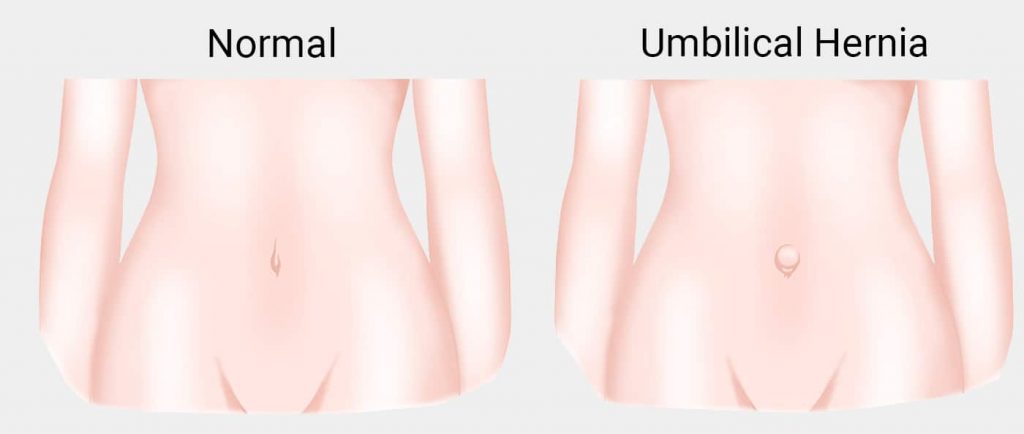
Umbilical Hernia Repair Surgery

Procedure Time
1 – 2 Hours

Anaesthesia
General Anaesthesia

Recovery Period
7 – 10 Days

Stitch Removal
7 Days Post-op
What Is Umbilical Hernia?
The umbilical hernia is actually a pouch or bulge that forms within the abdomen. Such bulges occur when a part of intestine or some abdominal cavity tissue pushes its way through a weaker spot in abdominal wall close to the belly button.
Is Umbilical Hernia the Same As Diastasis Recti?
By definition, umbilical hernia and diastasis recti are slightly different but the two go hand in hand with each other. Umbilical hernia remains a potentially serious medical condition. If an individual is suffering from this, it is common to have the other condition alongside as well.
What makes umbilical hernia risky is the potential trapping of the intestines in that hole which they usually squeeze through and this eventually leads to bowels’ obstruction. When this happens, it causes pain and may require an umbilical hernia repair surgery.
How Does Umbilical Hernia Look Like?
The hole lies close to the belly button and it often makes the outside look of the belly button like an “outie”.
This usually happens due to the increased internal abdominal pressure at a weak spot in the patient’s abdominal wall. Tissues are often stretched and become weak during pregnancy, creating a perfect storm for umbilical hernia development.

Who needs Umbilical Hernia Repair Surgery?
Umbilical hernia repair surgery is recommended for individuals who:
- Have a tender, painful, and swollen bulge close to their naval area
- Experience pain or abdominal discomfort
- Experience constipation
Surgical Repair for Umbilical Hernia
Sometimes umbilical hernias can be expected to go away with time without any surgical intervention, but some may need surgical intervention for repairing the abdominal muscles as well as putting intestines back into their place.
During Umbilical hernia Surgery, the surgeon makes a small cut of around 2cm to 3cm at the base of belly button to push the intestine loop or fatty limp back into their tummy.
Stitches are applied to strengthen the muscle layers of the abdominal wall through which the hernia was protruding from. For adult or large umbilical hernias, the surgeon may also place a special mesh patch on the patient’s abdominal wall to strengthen the particular area and provide support as the muscles heal.
Get in touch with us for more information on umbilical hernia surgery in Singapore or an assessment to better understand your condition.
